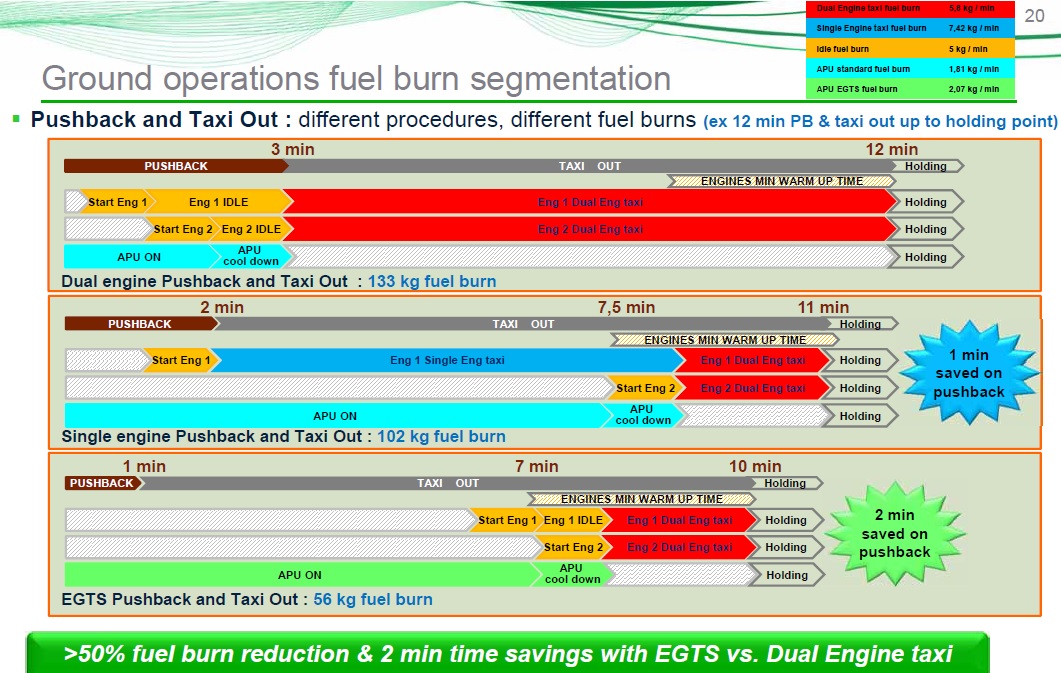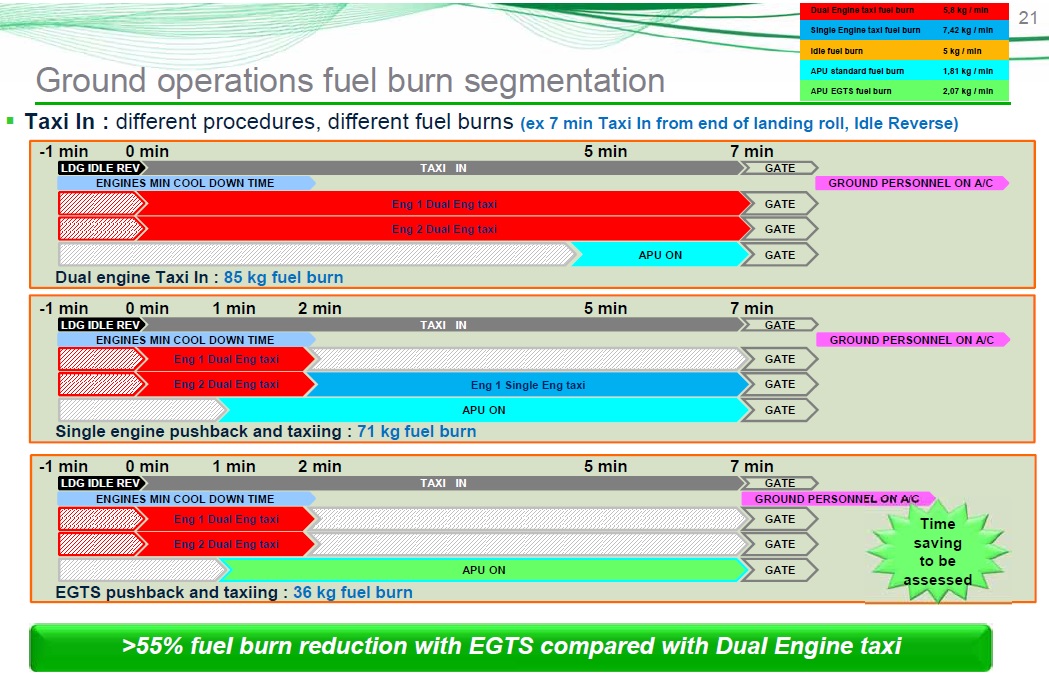http://www.aviationweek.com/Article.aspx?id=/article-xml/awx_06_16_2013_p0-588629.xml&p=1+
The appearance of the Electric Green Taxiing System (EGTS) at Le Bourget, added to mounting sales of the competing WheelTug system, indicates growing interest in fuel-saving electric-powered taxiing systems for commercial aircraft. The concept involves fitting electrically driven motors to the aircraft’s wheels which will be used in place of the main engines to taxi. The system takes power from the aircraft’s auxiliary power unit (APU), and is designed to save fuel and emissions, cut direct operating costs, reduce maintenance time, extend engine life and provide environmental benefits.
Unlike the taxi system in development by WheelTug, which uses electrically driven motors in the nose wheels, the Honeywell-Safran system incorporates motors fitted to the main landing gear. In development by EGTS, a joint venture formed between the two companies in 2012, the system could save up to $200,000 per aircraft per year in fuel costs, says Honeywell Product Marketing Vice President and EGTS business manager Jim Fusaro.
“We’ve looked at the mid- to short-haul market, and we think that’s where there is the greatest value,” Fusaro says. Based on the standard taxiing procedures of a typical A320 making a 500 naut. mi flight, the company predicts EGTS will save up to 4% of block fuel costs. Assumptions include an average taxi time of 20 min. with a single engine operating. “We are looking at total system savings, fuel consumption of the APU versus the main engine, the weight of the system and any of ancillary type of benefits, such as savings associated with tug operations, a 2-min. shave off the push-back time, reduced brake wear and less foreign object damage to the engine,” he adds. The system will also reduce carbon emissions by 75% and nitrogen oxide emissions by up to 50%, reducing carbon tax liability at various European airports.
The decision to opt for a system based on the wing-mounted landing gear rather than the nose leg was “predicated on the majority of the aircraft’s weight being transmitted through the main gear,” says Fusaro. Less than 10% of an aircraft’s weight is on the nose gear, so the EGTS team believes its system is therefore better equipped to handle adverse conditions on ground, slopes, snow, ice, and breakaway torque considerations when aircraft “sink” into soft tarmac on hot days.
Honeywell and Safran have combined expertise in avionics, power and landing gear systems into an integrated EGTS designed to accelerate to around 20 kt. in 90 sec., or 18 kt. at maximum take-off weight (MTOW). The system will also be capable of accelerating to 10 kt. in 20 sec. to cross active runways. It will also have the power to achieve breakaway torque on a 1.5% slope at MTOW.
The system will be built into one of the two wheels on each main landing gear unit, providing a 50 kW electric motor per leg. The installation includes power converters to drive the motors using power from the APU, and a reduction gearbox to drive the wheel through a clutch/reaction torque mechanism which is integrated with the brake control. The installed unit is currently expected to weigh around 150 kg per wheel, though “there will always be further optimization,” says Fusaro.
Encore un peu faible l'APU des A320 pour alimenter le système moteurs éteints, mais vu que l'APU de l'a320 va évoluer, il y a fort à parier que le dimensionnement sera suffisant dans le futur
Je note 150 kg par roue
Une aide à la manoeuvre
Pour le moment un système qui vient à côté des système de vols, mais on peut imaginer qu'intégrer à la logique de l'avion on puisse utiliser les moteurs électriques pour d'autres parties du roule, et pourquoi pas sur la piste ?, sachant que la puissance des moteurs électriques est surtout définie par des conditions d'échauffement est-ce qu'on peut envisager un effet additionnel aux moteurs au décollage ? et une participation au freinage à l'atterrissage (plus compliqué ça, sauf à travers des supercondensateurs)
A suivre
Pour mémo, 130 ch aux roues (2*50 kw) ça fait 1.5 kN de poussée (sur une plage de vitesse probablement réduite)
Dernière édition par Admin le Mar 21 Jan 2014 - 9:38, édité 1 fois







 !
!

